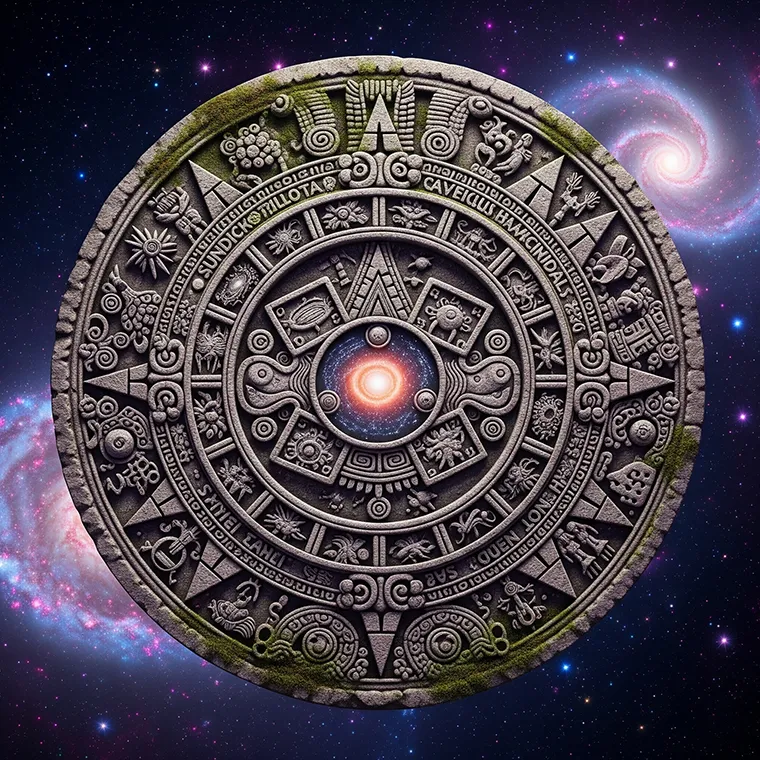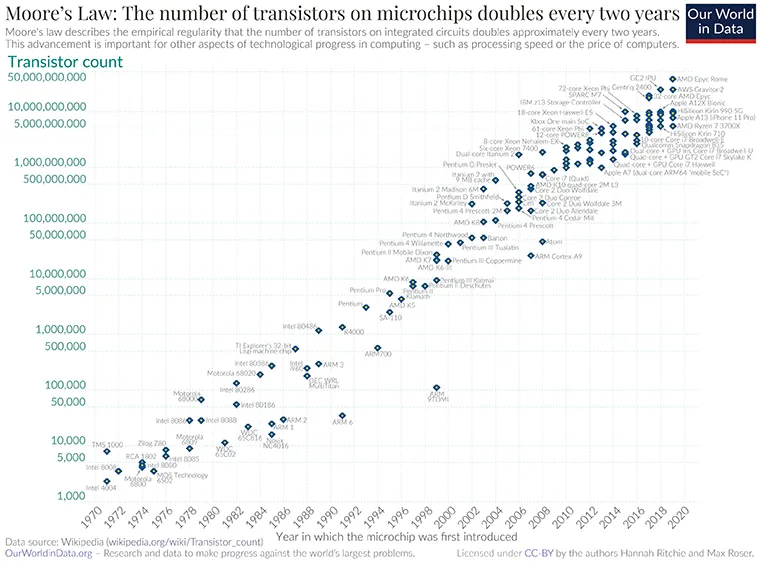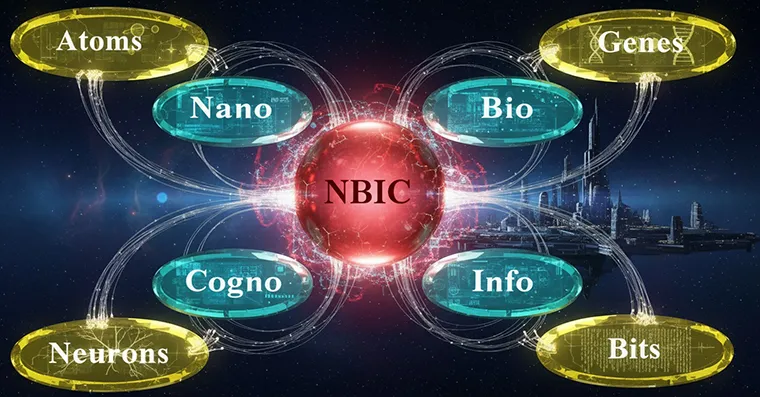Technological Evolution
by Lifeboat Foundation Advisory Board member José Luis Cordeiro.
The universe began with a bang.
Overview
Since the Big Bang, the universe has been in constant evolution and continuous transformation. First there were physical and chemical processes, then biological evolution, and finally now technological evolution. As we begin to ride the wave into human redesign, the destination is still largely unknown but the opportunities are almost limitless.
Biological evolution continues but it is just too slow to achieve the goals now possible thanks to technological evolution. Natural selection with trial and error can now be substituted by technical selection with engineering design. Humanity’s monopoly as the only advanced sentient life form on the planet will soon come to an end, supplemented by a number of posthuman incarnations. Moreover, how we re-engineer ourselves could fundamentally change the ways in which our society functions, and raise crucial questions about our identities and moral status as human beings.
Technological Evolution

The famous astronomer and astrobiologist Carl Sagan popularized the concept of a Cosmic Calendar about three decades ago.
The famous astronomer and astrobiologist Carl Sagan popularized the concept of a Cosmic Calendar about three decades ago. In his 1977 book, The Dragons of Eden: Speculations on the Evolution of Human Intelligence, Sagan wrote a timeline for the universe, starting with the Big Bang about 15 billion years ago. Today, we think that it all started about 13.7 billion years back, and we keep updating and improving our knowledge of life, the universe and everything. In his Cosmic Calendar, with each month representing slightly over one billion years, Sagan dated the major events during the first 11 months of the cosmic year.
| Big Bang | January 1 | |
| Origin of Milky Way Galaxy | May 1 | |
| Origin of the solar system | September 9 | |
| Formation of the Earth | September 14 | |
| Origin of life on Earth | ~ | September 25 |
| Formation of the oldest rocks known on Earth | October 2 | |
| Date of oldest fossils (bacteria and blue-green algae) | October 9 | |
| Invention of sex (by microorganisms) | ~ | November 1 |
| Oldest fossil photosynthetic plants | November 12 | |
| Eukaryotes (first cells with nuclei) flourish | November 15 | |
| Source: J.L. Cordeiro based on C. Sagan (1977) | ||
Interestingly enough, most of what we study in biological evolution happened in the last month. In fact, Sagan wrote that the first worms appeared on December 16, the invertebrates began to flourish on the 17th, the trilobites boomed on the 18th, the first fish and vertebrates appeared on the 19th, the plants colonized the land on the 20th, the animals colonized the land on the 21st, the first amphibians and first winged insects appeared on the 22nd, the first trees and first reptiles evolved on the 23rd, the first dinosaurs appeared on the 24th, the first mammals evolved on the 26th, the first birds emerged on the 27th, the dinosaurs became extinct on the 28th, the first primates appeared on the 29th and the frontal lobes evolved in the brains of primates and the first hominids appeared on the 30th. Basically, humans are just the new kids in the block, and only evolved late at night on the last day of this Cosmic Calendar.
| Origin of Proconsul and Ramapithecus, probable ancestors of apes and men | ~ | 1:30 pm |
| First humans | ~ | 10:30 pm |
| Widespread use of stone tools | 11:00 pm | |
| Domestication of fire by Peking man | 11:46 pm | |
| Beginning of most recent glacial period | 11:56 pm | |
| Seafarers settle Australia | 11:58 pm | |
| Extensive cave painting in Europe | 11:59 pm | |
| Invention of agriculture | 11:59:20 pm | |
| Neolithic civilization; first cities | 11:59:35 pm | |
| First dynasties in Sumer, Elba, and Egypt; development of astronomy | 11:59:50 pm | |
| Invention of the alphabet; Akkadian Empire | 11:59:51 pm | |
| Hammurabic legal codes in Babylon; Middle Kingdom in Egypt | 11:59:52 pm | |
| Bronze metallurgy; Mycenaean culture; Trojan War; Olmec culture; invention of the compass | 11:59:53 pm | |
| Iron metallurgy; First Assyrian Empire; Kingdom of Israel; founding of Carthage by Phoenicia | 11:59:54 pm | |
| Asokan India; Ch’in Dynasty China; Periclean Athens; birth of Buddha | 11:59:55 pm | |
| Euclidean geometry; Archimedean physics; Ptolemaic astronomy; Roman Empire; birth of Christ | 11:59:56 pm | |
| Zero and decimals invented in Indian arithmetic; Rome falls; Moslem conquests | 11:59:57 pm | |
| Mayan civilization; Sung Dynasty China; Byzantine empire; Mongol invasion; Crusades | 11:59:58 pm | |
| Renaissance in Europe; voyages of discovery from Europe and from Ming Dynasty China; emergence of the experimental method in science | 11:59:59 pm | |
| Widespread development of science and technology; emergence of global culture; acquisition of the means of self-destruction of the human species; first steps in spacecraft planetary exploration and the search of extraterrestrial intelligence | Now: The first second of New Year’s Day | |
| Source: J.L. Cordeiro based on C. Sagan (1977) | ||
The previous Cosmic Calendar is an excellent way to visualize the acceleration of change and the continuous evolution of the universe. Other authors have developed similar ideas to try to show the rise of complexity in nature. For example, in 2005, astrophysicist Eric Chaisson published his latest book, Epic of Evolution: Seven Ages of the Cosmos, where he describes the formation of the universe through the development of seven ages: matter, galaxies, stars, heavy elements, planets, life, complex life, and society. Chaisson presents a valuable survey of these fields and shows how combinations of simpler systems transform into more complex systems, and he thus gives a glimpse of what the future might bring.
Both Sagan and Chaisson wrote excellent overviews about evolution, from its cosmic beginnings to the recent emergence of humans and technology. However, a more futuristic look is given by futurist and inventor Ray Kurzweil in his 2005 book: The Singularity is Near: When Humans Transcend Biology. Kurzweil talks about six epochs with increasing complexity and accumulated information processing.
| Epoch 1 | Physics and chemistry (information in atomic structures) | |
| Epoch 2 | Biology (information in DNA) | |
| Epoch 3 | Brains (information in neural patterns) | |
| Epoch 4 | Technology (information in hardwarde and software designs) | |
| Epoch 5 | Merger of technology and human intelligence (the methods of biology, including human intelligence, are integrated into the exponentially expanding human technology base) | |
| The universe wakes up (patterns of matter and energy in the universe become saturated with intelligent processes and knowledge) | ||
| Ray Kurzweil, The Singularity is Near, Viking, 2005 | ||
According to Kurzweil, we are entering Epoch 5 with an accelerating rate of change. The major event of this merger of technology and human intelligence will be the emergence of a “technological singularity”. Kurzweil believes that within a quarter century, non-biological intelligence will match the range and subtlety of human intelligence. It will then soar past it because of the continuing acceleration of information-based technologies, as well as the ability of machines to instantly share their knowledge.
Eventually, intelligent nanorobots will be deeply integrated in our bodies, our brains, and our environment, overcoming pollution and poverty, providing vastly extended longevity, full-immersion virtual reality incorporating all of the senses, and vastly enhanced human intelligence. The result will be an intimate merger between the technology-creating species and the technological evolutionary process it spawned.
Computer scientist and science fiction writer Vernor Vinge first discussed this idea of a technological singularity in a now classic 1993 paper, where he predicted:
“Within thirty years, we will have the technological means to create superhuman intelligence. Shortly after, the human era will be ended.”
Other authors talk about such technological singularity as the moment in time when artificial intelligence will overtake human intelligence. Kurzweil has also proposed the “Law of Accelerating Returns”, as a generalization of Moore’s law to describe an exponential growth of technological progress. Moore’s law deals with an exponential growth pattern in the complexity of integrated semiconductor circuits (see Figure 1).

Figure 1: Moore’s Law. Source: Wikipedia.
Kurzweil extends Moore’s law to include technologies from far before the integrated circuit to future forms of computation. Whenever a technology approaches some kind of a barrier, he writes, a new technology will be invented to allow us to cross that barrier. He predicts that such paradigm shifts will become increasingly common, leading to “technological change so rapid and profound it represents a rupture in the fabric of human history”. He believes the “Law of Accelerating Returns” implies that a technological singularity will occur around 2045:
“An analysis of the history of technology shows that technological change is exponential, contrary to the common-sense ‘intuitive linear’ view. So we won’t experience 100 years of progress in the 21st century-it will be more like 20,000 years of progress (at today’s rate). The ‘returns’, such as chip speed and cost-effectiveness, also increase exponentially. There’s even exponential growth in the rate of exponential growth. Within a few decades, machine intelligence will surpass human intelligence, leading to the Singularity — technological change so rapid and profound it represents a rupture in the fabric of human history. The implications include the merger of biological and non-biological intelligence, immortal software-based humans, and ultra-high levels of intelligence that expand outward in the universe at the speed of light.”
Technological Convergence
Futurists today have diverging views about the singularity: some see it as a very likely scenario, while others believe that it is more probable that there will never be any very sudden and dramatic changes due to progress in artificial intelligence. However, most futurists and scientists agree that there is an increasing rate of technological change. In fact, the rapid emergence of new technologies has generated scientific developments never dreamed of before.
The expression “emerging technologies” is used to cover such new and potentially powerful technologies as genetic engineering, artificial intelligence, and nanotechnology. Although the exact denotation of the expression is vague, various writers have identified clusters of such technologies that they consider critical to humanity’s future. These proposed technology clusters are typically abbreviated by such combinations of letters as NBIC, which stands for Nanotechnology, Biotechnology, Information technology and Cognitive science.
Various other acronyms have been offered for essentially the same concept, such as GNR (Genetics, Nanotechnology and Robotics) used by Kurzweil, while others prefer NRG because it sounds similar to “energy”. Journalist Joel Garreau in Radical Evolution uses GRIN, for Genetic, Robotic, Information, and Nano processes, while author Douglas Mulhall in Our Molecular Future uses GRAIN, for Genetics, Robotics, Artificial Intelligence, and Nanotechnology. Another acronym is BANG for Bits, Atoms, Neurons, and Genes.
The first NBIC Conference for Improving Human Performance was organized in 2003 by the NSF (National Science Foundation) and the DOC (Department of Commerce). Since then, there have been many similar gatherings, in the USA and overseas. The European Union has been working on its own strategy towards converging technologies, and so have been other countries in Asia, starting with Japan.
The idea of technological convergence is based on the merger of different scientific disciplines thanks to the acceleration of change on all NBIC fields. Nanotechnology deals with atoms and molecules, biotechnology with genes and cells, infotechnology with bits and bytes, and cognitive science with neurons and brains. These four fields are converging thanks to the larger and faster information processing of ever more powerful computers.

Figure 2: Technological Convergence NBIC. Source: J.L. Cordeiro based on M.C. Roco and W.S. Bainbridge (2003).
Experts from the four NBIC fields agree about the incredible potential of technological evolution finally overtaking and directing biological evolution. Bill Gates of Microsoft has stated that:
“I expect to see breathtaking advances in medicine over the next two decades, and biotechnology researchers and companies will be at the center of that progress. I’m a big believer in information technology?but it is hard to argue that the emerging medical revolution, spearheaded by the biotechnology industry, is any less important to the future of humankind. It, too, will empower people and raise the standard of living.”
Larry Ellison of Oracle, Gates’ chief rival in the software industry, agrees: “If I were 21 years old, I probably wouldn’t go into computing. The computing industry is about to become boring”. He explains that: “I would go into genetic engineering.” Biologist Craig Venter has said that he spent 10 years reading the human genome, and now he is planning to write new genomes. He wants to create completely new forms of life, from scratch. Scientist and writer Gregory Stock also believes that cloning, even though a fundamental step in biotechnology, is just too simple and unexciting: “why copy old life forms when we can now create new ones?”
Biological evolution allowed the appearance of human beings, and many other species, through millions of years of natural selection based on trials and errors. Now we can control biological evolution, direct it and go beyond it. In fact, why stop evolution with carbon-based life forms? Why not move into silicon-based life, among many other possibilities? Robotics and artificial intelligence will allow us to do just that.
Scientist Marvin Minsky, one of the fathers of artificial intelligence at MIT, wrote a very famous 1994 article “Will robots inherit the Earth?” in Scientific American, where he concludes: “Yes, but they will be our children. We owe our minds to the deaths and lives of all the creatures that were ever engaged in the struggle called Evolution. Our job is to see that all this work shall not end up in meaningless waste.” Robotics expert Hans Moravec has written two books about robots and our (their) future: Mind Children in 1988 and Robot in 1998. Moravec argues that robots will be our rightful descendants and he explains several ways to “upload” a mind into a robot.
In England, cybernetics professor Kevin Warwick has been implanting his own body with several microchip devices and published in 2003 a book explaining his experiments: I, Cyborg. Warwick is a cybernetics pioneer who claims that: “I was born human. But this was an accident of fate — a condition merely of time and place. I believe it’s something we have the power to change… The future is out there; I am eager to see what it holds. I want to do something with my life: I want to be a cyborg.”
As these authors and thinkers suggest, we need to start preparing ourselves for the coming NBIC realities of technological convergence, including robotics and artificial intelligence. Thanks to technological evolution, humans will transcend our biological limitations to become transhumans and eventually posthumans. To ease this transition into a posthuman condition, we must ready ourselves for the distinct possibility that the Earth, and other planets, will be inherited by not just one but several forms of highly intelligent and sentient life forms. The philosophy of Extropy (see Appendix 1) and Transhumanism (see Appendix 2) explain these boundless possibilities for future generations.

Humans are beginning to merge with machines.
The Human Seed
Humans are not the end of evolution but just the beginning of a better, conscious and technological evolution. The human body is a good beginning, but we can certainly improve it, upgrade it, and transcend it. Biological evolution through natural selection might be ending, but technological evolution is only accelerating now. Technology, which started to show dominance over biological processes some years ago, is finally overtaking biology as the science of life.
As fuzzy logic theorist Bart Kosko has said: “biology is not destiny. It was never more than tendency. It was just nature’s first quick and dirty way to compute with meat. Chips are destiny.” And photo-qubits might come soon after standard silicon-based chips, but even that is only an intermediate means for eternal intelligent life in the universe.
Humans are the first species which is conscious of its own evolution and limitations, and humans will eventually transcend these constraints to become posthumans. It might be a rapid process like caterpillars becoming butterflies, as opposed to the slow evolutionary passage from apes to humans. Future intelligent life forms might not even resemble human beings at all, and carbon-based organisms will mix with a plethora of other organisms. These posthumans will depend not only on carbon-based systems but also on silicon and other “platforms” which might be more convenient for different environments, like traveling in outer space.
Eventually, all these new sentient life forms might be connected to become a global brain, a large interplanetary brain, and even a larger intergalactic brain. The ultimate scientific and philosophical queries will continue to be tackled by these posthuman life forms. Intelligence will keep on evolving and will try to answer the old-age questions of life, the universe and everything. With ethics and wisdom, humans will become posthumans, as science fiction writer David Zindell suggested:
“What is a human being, then?”
“A seed.”
“A …seed?”
“An acorn that is unafraid to destroy itself in growing into a tree.”
Appendix 1: The Principles of Extropy
Developed by Max More and Natasha Vita-More.
Perpetual Progress: Extropy means seeking more intelligence, wisdom, and effectiveness, an open-ended lifespan, and the removal of political, cultural, biological, and psychological limits to continuing development. Perpetually overcoming constraints on our progress and possibilities as individuals, as organizations, and as a species. Growing in healthy directions without bound.
Self-Transformation: Extropy means affirming continual ethical, intellectual, and physical self-improvement, through critical and creative thinking, perpetual learning, personal responsibility, proactivity, and experimentation. Using technology — in the widest sense to seek physiological and neurological augmentation along with emotional and psychological refinement.
Practical Optimism: Extropy means fueling action with positive expectations – individuals and organizations being tirelessly proactive. Adopting a rational, action-based optimism or “proaction”, in place of both blind faith and stagnant pessimism.
Intelligent Technology: Extropy means designing and managing technologies not as ends in themselves but as effective means for improving life. Applying science and technology creatively and courageously to transcend “natural” but harmful, confining qualities derived from our biological heritage, culture, and environment.
Open Society — information and democracy: Extropy means supporting social orders that foster freedom of communication, freedom of action, experimentation, innovation, questioning, and learning. Opposing authoritarian social control and unnecessary hierarchy and favoring the rule of law and decentralization of power and responsibility. Preferring bargaining over battling, exchange over extortion, and communication over compulsion. Openness to improvement rather than a static utopia. Extropia (“ever-receding stretch goals for society”) over utopia (“no place”).
Self-Direction: Extropy means valuing independent thinking, individual freedom, personal responsibility, self-direction, self-respect, and a parallel respect for others.
Rational Thinking: Extropy means favoring reason over blind faith and questioning over dogma. It means understanding, experimenting, learning, challenging, and innovating rather than clinging to beliefs.
Appendix 2: The Transhumanist Declaration
Developed by the World Transhumanist Association.
(1) Humanity will be radically changed by technology in the future. We foresee the feasibility of redesigning the human condition, including such parameters as the inevitability of aging, limitations on human and artificial intellects, unchosen psychology, suffering, and our confinement to the planet earth.
(2) Systematic research should be put into understanding these coming developments and their long-term consequences.
(3) Transhumanists generally think that by being open and embracing of new technology we have a better chance of turning it to our advantage than if we try to ban or prohibit it.
(4) Transhumanists advocate the moral right for those who so wish to use technology to extend their mental and physical (including reproductive) capacities and to improve their control over their own lives. We seek personal growth beyond our current biological limitations.
(5) In planning for the future, it is mandatory to take into account the prospect of dramatic progress in technological capabilities. It would be tragic if the potential benefits failed to materialize because of technophobia and unnecessary prohibitions. On the other hand, it would also be tragic if intelligent life went extinct because of some disaster or war involving advanced technologies.
(6) We need to create forums where people can rationally debate what needs to be done and a social order where responsible decisions can be implemented.
(7) Transhumanism advocates the well-being of all sentience (whether in artificial intellects, humans, posthumans, or non-human animals) and encompasses many principles of modern humanism. Transhumanism does not support any particular party, politician or political platform.
References
Asimov, Isaac. [1950] 1994. I, Robot. New York: Bantam Books.
British Telecom. 2005. Technology Timeline. London: British Telecom.
Chaisson, Eric. 2005. Epic of Evolution: Seven Ages of the Cosmos. New York: Columbia University Press.
Clarke, Arthur C. 1984 (revised). Profiles of the Future: An Inquiry into the Limits of the Possible. New York: Henry Holt and Company.
Condorcet, Marie J. 1979. Sketch for a historical picture of the progress of the human mind. Westport, Connecticut: Greenwood Press.
Cordeiro, José Luis. 1998. Benesuela vs. Venezuela: El Combate Educativo del Siglo. Caracas: Cedice.
Drexler, K. Eric. 1987. Engines of Creation. New York: Anchor Books.
Foundation for the Future. 2002. The Next Thousand Years. Bellevue, Washington.
Fumento, Michael. 2003. BioEvolution: How Biotechnology is Changing the World. San Francisco: Encounter Books.
Garreau, Joel. 2005. Radical Evolution: The Promise and Peril of Enhancing Our Minds, Our Bodies — and What It Means to Be Human. New York: Doubleday.
Glenn, Jerome and Gordon, Theodore. 2005. State of the Future 2005. Washington, DC: The Millennium Project.
Haraway, Donna. 1991. “A Cyborg Manifesto” in Simians, Cyborgs and Women: The Reinvention of Nature. New York: Routledge.
Hawking, Stephen. 2002. The Theory of Everything: The Origin and Fate of the Universe. New York: New Millennium Press.
Joy, Bill. 2000. Why The Future Doesn’t Need Us. Wired. April 2000.
Kurian, George T. and Molitor, Graham T.T. 1996. Encyclopedia of the Future. New York: Macmillan.
Kurzweil, Ray. 2005. The Singularity is Near: When Humans Transcend Biology, New York: Viking.
Kurzweil, Ray. 1999. The Age of Spiritual Machines. New York: Penguin Books.
Minsky, Marvin. 1994. Will robots inherit the Earth?, Scientific American, October 1994.
Minsky, Marvin. 1987. The Society of Mind. New York: Simon and Schuster.
Moravec, Hans. 1998. Robot: Mere Machine to Transcendent Mind. Oxford.
Moravec, Hans. 1988. Mind Children. Boston: Harvard University Press.
More, Max. 2003. The Principles of Extropy. The Extropy Institute.
Mulhall, Douglas. 2002. Our Molecular Future. Amherst, New York: Prometheus Books.
Pearson, Ian. 1998. Atlas of the Future. New York: Macmillan.
Paul, Gregory S. and Cox, Earl. 1996. Beyond Humanity: Cyberevolution and Future Minds. Hingham, Massachusetts: Charles River Media.
Regis, Edward. 1991. Great Mambo Chicken and the Transhuman Condition: Science Slightly over the Edge. New York: Perseus Publishing.
Roco, Mihail C. and Bainbridge, William Sims (eds.). 2003. Converging Technologies for Improving Human Performance. Dordrecht, Netherlands: Kluwer.
Roco, Mihail C. and Montemagno, Carlo D. (eds.). 2004. The Coevolution of Human Potential and Converging Technologies. New York: New York Academy of Sciences (Annals of the New York Academy of Sciences, volume 1013).
Sagan, Carl. 1977. The Dragons of Eden: Speculations on the Evolution of Human Intelligence. New York: Random House.
Stock, Gregory. 2002. Redesigning Humans: Our Inevitable Genetic Future. New York: Houghton Mifflin Company.
Teilhard de Chardin, Pierre. 1964. The Future of Man. New York: Harper & Row.
Vinge, Vernor. 1993. The Coming Technological Singularity, Whole Earth Review Winter issue.
Warwick, Kevin. 2003. I, Cyborg. London: Garnder’s.
Wells, H.G. 1902. The Discovery of the Future. Nature, 65.
World Transhumanist Association. 2002. The Transhumanist Declaration.
Zindell, David. 1994. The Broken God. New York: Acacia Press.